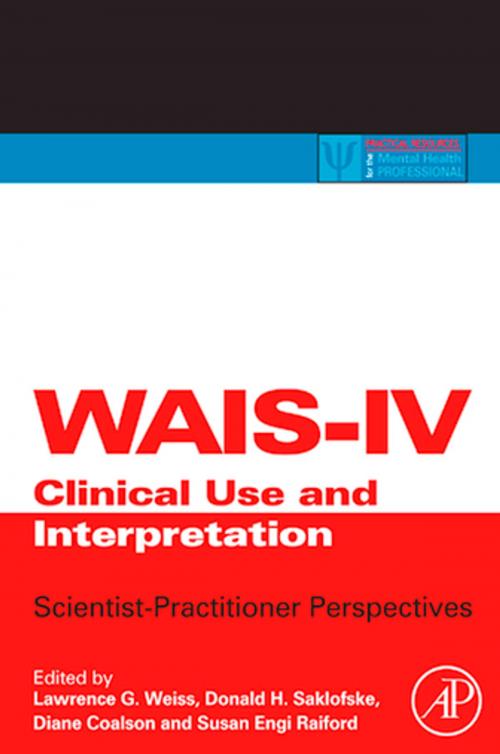WAIS-IV Clinical Use and Interpretation
Scientist-Practitioner Perspectives
Nonfiction, Reference & Language, Education & Teaching, Educational Theory, Educational Psychology, Health & Well Being, Psychology, Developmental Psychology| Author: | ISBN: | 9780080963211 | |
| Publisher: | Elsevier Science | Publication: | June 22, 2010 |
| Imprint: | Academic Press | Language: | English |
| Author: | |
| ISBN: | 9780080963211 |
| Publisher: | Elsevier Science |
| Publication: | June 22, 2010 |
| Imprint: | Academic Press |
| Language: | English |
Published in August of 2008, WAIS–IV is the most widely used intelligence test for adults in the world. Substantive changes were made to the WAIS-IV from the WAIS-III leaving clinicians with questions as to how to use and interpret the measure effectively. Written by the creators of the new test, this book serves as the ultimate insider's guide to the new test, providing users with the kind of access to norms and data that would be unavailable to any subsequent book on clinical use of this measure.
The book discusses the changes made between 3rd and 4th editions along with an FAQ and answers about use and interpretation. The reader is instructed how to interpret composite scores, and everything needed to use and interpret two entirely new composite scores: the General Ability Index (GAI), and the Cognitive Proficiency Index (CPI). This information does NOT appear in the manual accompanying the test.
The second section of the book focuses on WAIS–IV use and interpretation with special clinical applications and populations, including with multicultural clients, in neuropsychological settings, with individuals experiencing psychological disorders, and with older adults. The editors and chapter authors have exclusive access to proprietary WAIS–IV data to run advanced analyses and provide information beyond what is offered in the WAIS-IV manual.
- Provides practical advice on scoring and administration
- Facilitates understanding WAIS-IV use with special populations
- Describes use of the WAIS-IV with WMS-II
Published in August of 2008, WAIS–IV is the most widely used intelligence test for adults in the world. Substantive changes were made to the WAIS-IV from the WAIS-III leaving clinicians with questions as to how to use and interpret the measure effectively. Written by the creators of the new test, this book serves as the ultimate insider's guide to the new test, providing users with the kind of access to norms and data that would be unavailable to any subsequent book on clinical use of this measure.
The book discusses the changes made between 3rd and 4th editions along with an FAQ and answers about use and interpretation. The reader is instructed how to interpret composite scores, and everything needed to use and interpret two entirely new composite scores: the General Ability Index (GAI), and the Cognitive Proficiency Index (CPI). This information does NOT appear in the manual accompanying the test.
The second section of the book focuses on WAIS–IV use and interpretation with special clinical applications and populations, including with multicultural clients, in neuropsychological settings, with individuals experiencing psychological disorders, and with older adults. The editors and chapter authors have exclusive access to proprietary WAIS–IV data to run advanced analyses and provide information beyond what is offered in the WAIS-IV manual.
- Provides practical advice on scoring and administration
- Facilitates understanding WAIS-IV use with special populations
- Describes use of the WAIS-IV with WMS-II















